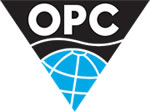- MOL Group profit before tax reached USD 236 mn in the second quarter of 2025, down by 56% year-on-year due to lower operating profits but supported by finance gains.
- Upstream’s performance was influenced by decreasing oil and gas prices, while production remained at high levels.
- Downstream’s performance was lowered due to the regional slowdown in demand, but the effect of lower prices was largely offset by strong sales volumes.
- Consumer Services performance was supported by contribution from both fuel and non-fuel side.
- Circular Economy Services reported a negative EBITDA of USD 10 mn due to seasonally higher operating expenses.
- Gas midstream performance declined despite high transmission volumes.

MOL Group announced its financial results for Q2 and H1 2025. In the second quarter of the year, MOL Group delivered USD 236 mn profit before tax, marking a 56% decrease year-on-year. Slowing regional macroeconomic environment impacted performance adversely in Q2, however, this was offset by high production levels in Upstream, strong volumes in Downstream and growing Consumer Services performance.
Chairman-CEO Zsolt Hernádi commented on the results: 'Geopolitical tensions and regional macroeconomic challenges significantly impacted our performance; however, our integrated business model helped us mitigate the impacts. Based on our first-half results, we have reaffirmed our 2025 guidance, albeit the risks to reaching the guidance have increased as the volatility in external conditions have grown since we announced our expectations in February.
We respond to global challenges with conscious planning, dedicated work and a future-proof strategy. We also need to do our homework in terms of efficiency improvement therefore we have launched a comprehensive program in downstream which aims to generate USD 500 mn improvement per year. This not only mitigates the effect of the worsening macro environment but also brings USD 200mn additional EBITDA for the downstream segment beyond 2027 via multiple new measures not yet included in the strategy.
We are further deepening our strategic cooperation with our Azerbaijani and Kazakh partners, enabling us to take important steps in joint exploration and production and in the diversification of crude oil. We took a role in the renewal of the Budapest University of Technology and Economics as a strategic investor, enabling us to enhance our innovation capacities and to train and attract engineers with state-of-the-art knowledge—a crucial step for the future of MOL Group.'
Upstream results decreased quarter-on-quarter as both oil and gas prices marked a double-digit decrease in Q2. Production remained at high levels with an average of 93.5 mboepd in Q2 2025, in the upper half of the guidance band of 92-94 mboepd, marking a slight quarter-on-quarter decrease due to the underperformance of international assets. Meanwhile, key terms were signed with SOCAR to enter onshore exploration in the Shamakhi-Gobustan region of Azerbaijan as operator with 65% stake.
The Downstream segment’s performance declined year-on-year as the slowing regional macroeconomic environment weighed on prices, but strong production and sales volumes, that were highest in a decade, could largely offset the effect of decreasing margins. Petrochemicals remained loss-making due to the continuing contraction in demand, which has not yet eased.
A new comprehensive program was launched to improve the operational and financial resiliency of Downstream in a more volatile external environment. The 'Tomorrow Downstream' program aims to generate USD 500 mn in annual improvement beyond 2027, offsetting the worsening macro effects and delivering an additional USD 200 mn to the annual USD 1.2 bn downstream strategic EBITDA target .
Consumer Services delivered continued growth, supported by a strong season on both fuel and non-fuel side, despite the macroeconomic environment remaining a challenge in the core countries. Fuel margins continued to strengthen on the Romanian and Croatian markets, while the dynamics of non-fuel expansion remained healthy. The rollout of the Fresh Corner concept continued at train stations and in railway dining cars and the network expanded to 1,356 units by the end of Q2 2025, marking a 1% increase quarter-on-quarter and 7% year-on-year.
Circular Economy Services reported a negative EBITDA of USD 10 mn due to seasonally higher operating expenses. The main CAPEX priority remained ramping up the Deposit Return System (DRS) with redemption being available at nearly 5,000 locations. Beverage packaging returns grew by 34% quarter-on-quarter, reaching approximately 8.7 million units per day.
Gas Midstream EBITDA declined year-on-year despite the strong demand for transmission services, in line with the lower tariff environment.
Source: MOL Group










